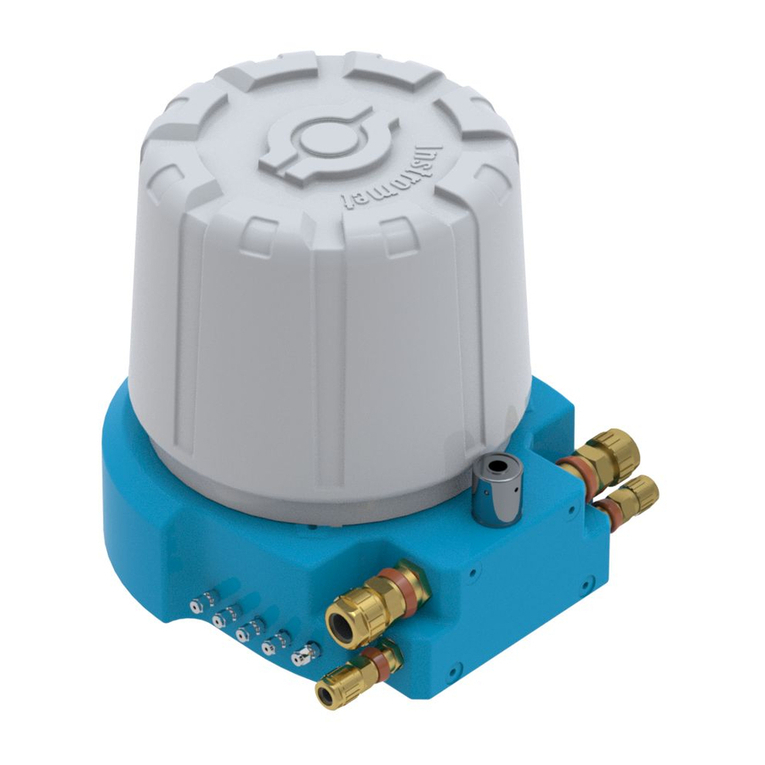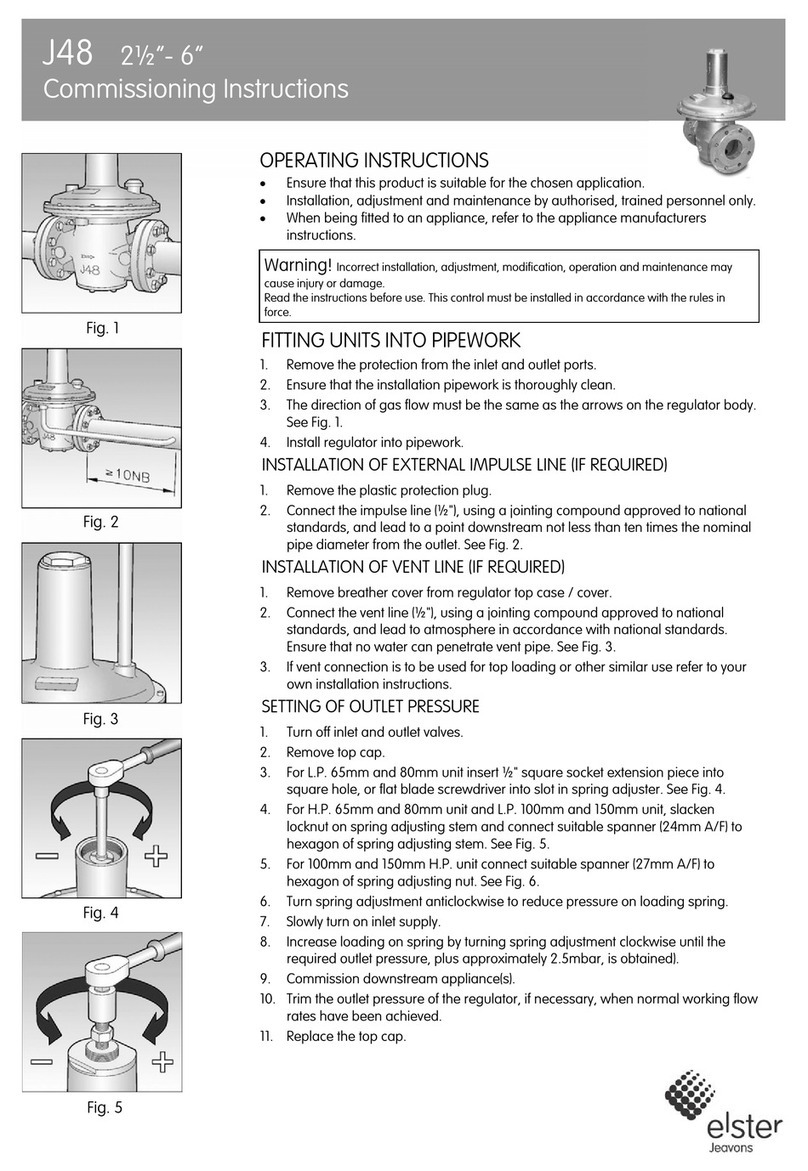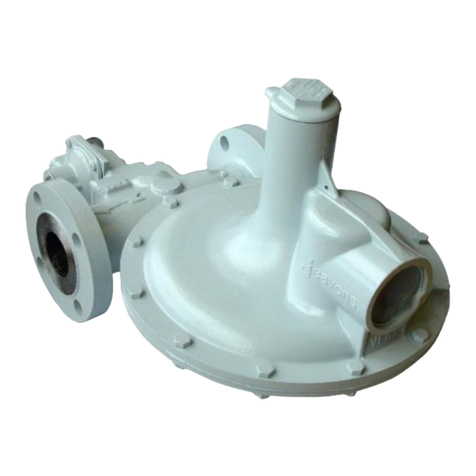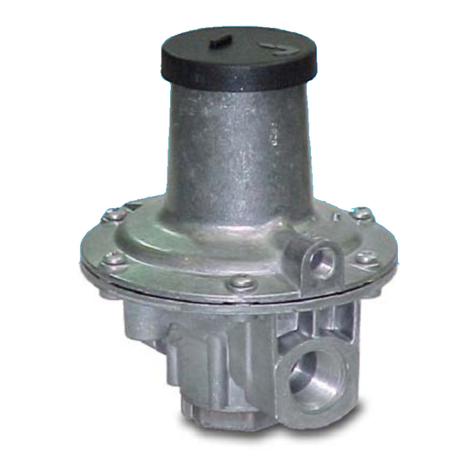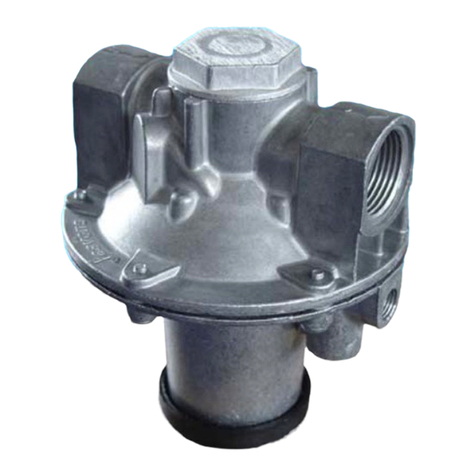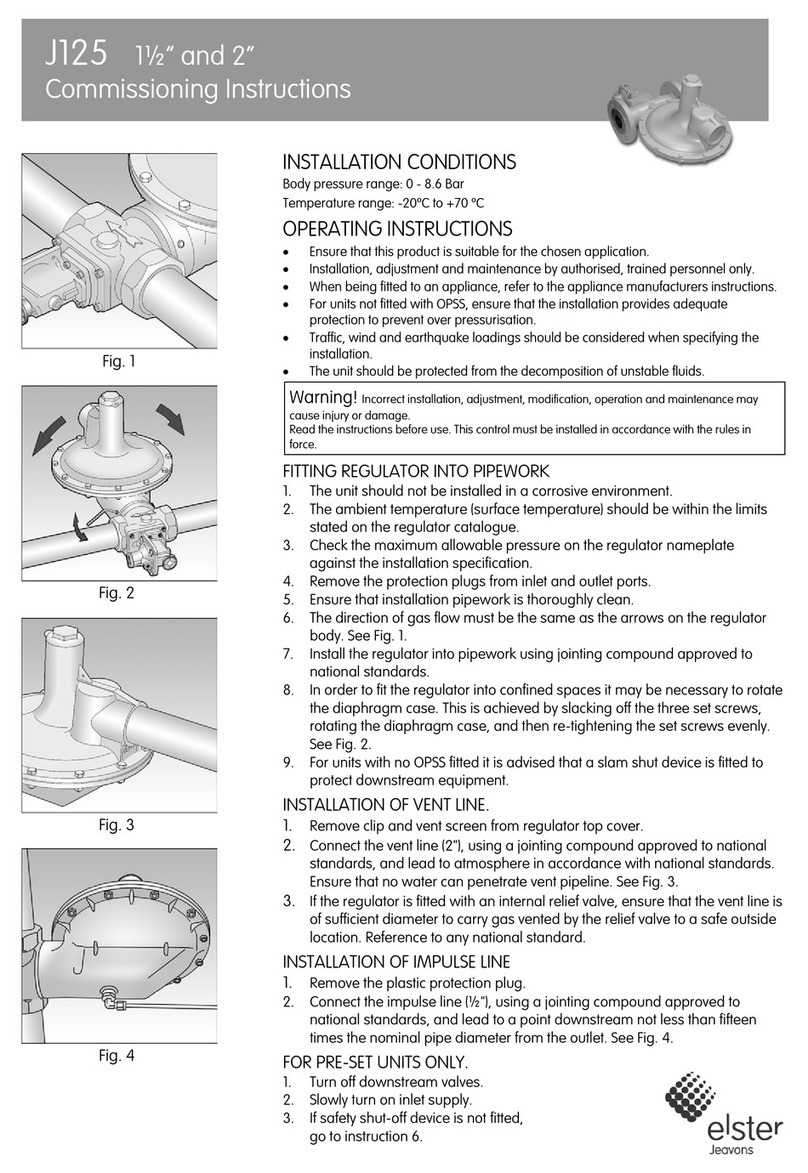
SR100 Series Service Regulators
The SR113 Service Regulator comes
equipped with a full capacity internal
relief valve and features a 3/4" or 1" NPT
threaded vent.
Available 180° valve body sizes: 3/4" x
3/4", 3/4" x 1" and 1" x 1" NPT or BSP-TR.
Available 90° valve body sizes: 3/4" x 3/4",
3/4" x 1" and 1" x 1" NPT or BSP -TR.
Offset valve body sizes: 3/4" x 3/4", 3/4" x 1"
and 1" x 1" NPT or BSP-TR.
Applications
Do not connect the inlet of the
regulator to a pressure source
higher than recommended
in Table 3 on page 4. Never
connect the regulator outlet to
the pressure source. Observe
the flow direction arrow on the
valve body. Some additional
form of overpressure protection
may be required In applications
where downstream maximum
pressure ratings are less than
the regulator inlet pressure
Install, operate, inspect and
maintain the regulators as
outlined in the following
instructions and in accordance
with your company's policies
and applicable federal,
state, and local codes and
laws. Failure to follow these
instructions may result in
damage to the regulator or
personal injury.
Check installation location for1.
suitability. Physical changes may
have been made to the building site
since the original installation.
Examine regulator for shipping damage.2.
Check regulator and piping for foreign3.
matter which may have accumulated
during shipment or handling.
To prevent regulator damage
and possible personal injury,
pressures must not exceed:
Maximum inlet pressure,
normal service (P1): Depending
on orifice size, up to 125 PSIG
(see Table 3 on page 4).
Maximum outlet pressure,
normal service (P2): Depending
on spring selection, up to 2
PSIG (see Table 1 on page 3).
Maximum inlet pressure for
abnormal or emergency service
without causing damage to
regulator case is 175 PSIG.
Maximum outlet pressure which
can be contained by pressure
carrying components (no flange
leakage to atmosphere except
for normal relief action) is 10
PSIG. Remove from service if
regulator is subjected to this
condition.
Maximum outlet pressure
for abnormal service without
damage to internal components
is 50 PSIG. Remove from service
if regulator is subjected to this
condition.
General Information
G
Regulator Pressure Ratings
!WARNING
Preparations
!WARNING
SR100 Series Service Regulators 02 Elster American Meter
Check regulator information stamped4.
on seal plug to determine if regulator is
suitable for intended service (see Item
14, page 3).
Suitable stop valve(s) should be5.
installed and conveniently located.
Filters are available from Elster6.
American Meter for applications
where pipeline contaminants are
believed to be present.
Regulators may be used at7.
temperatures between -20°F and
+150°F (-30°C and +65°C).
Model Number Description
SR113 Basic regulator, full-capacity internal relief with 3/4"
or 1" NPT vent.






